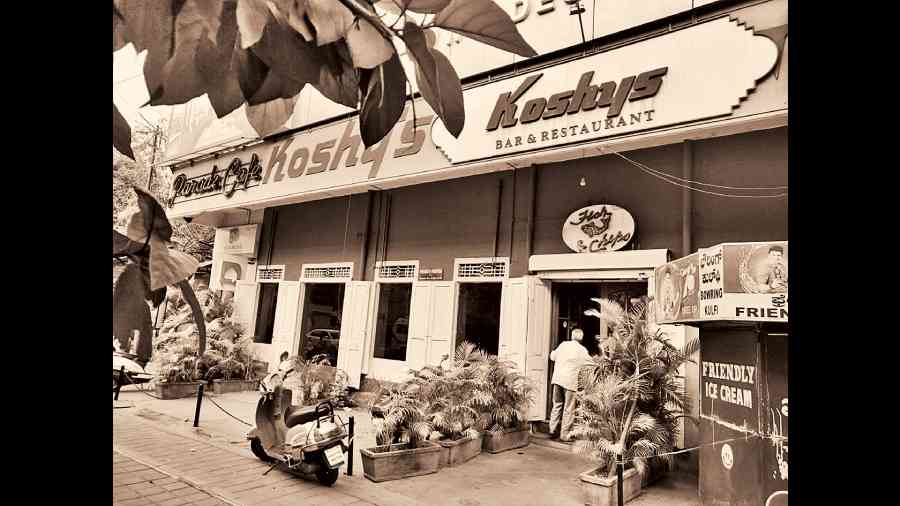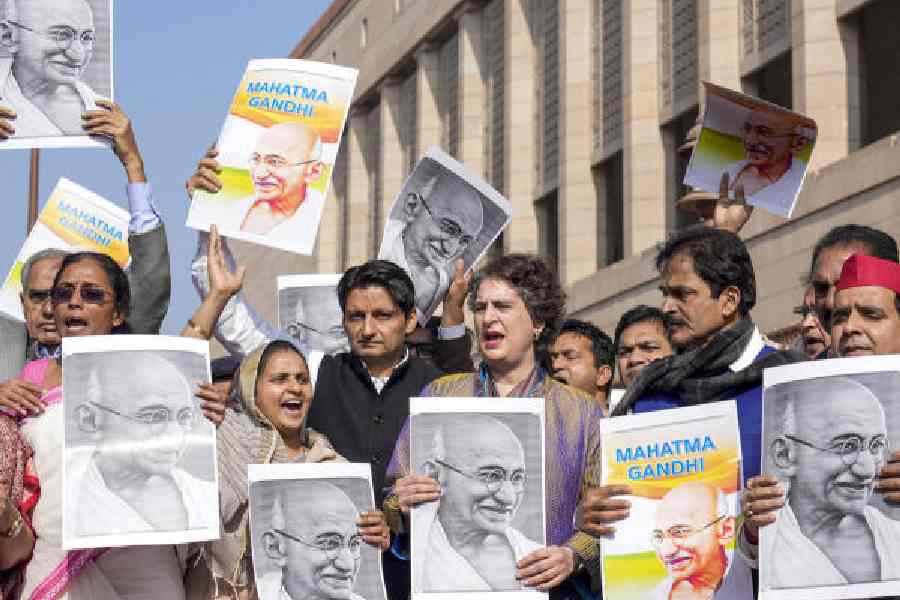Last week, I visited Bangalore for three days after many years and it felt like coming home. It’s interesting how little it takes to confect a sense of belonging. My claim to Bangalore is that my father went to college there and his father worked for the princely state of Mysore. More importantly, members of the South Indian half of my extended family are scattered all over the city, from Malleshwaram to Koramangala. From this thin material, I’ve managed, over the years, to work up a sense of ownership.
One way to own a city is to return, time and again, to the same places because a scene of homecoming needs props. In Bangalore, I invariably have a beer and a mutton cutlet at Koshy’s before walking down Church Street to Blossom, the many-storied second-hand bookshop, which has the most comprehensive collection of science fiction I have ever seen under a single roof. Older readers of science fiction (like me) used to fancy themselves as loyalists of a marginal genre. Now that SF has gone mainstream, thanks to mostly bad movies and worse shows, that beleaguered sense of belonging is hard to come by, but being surrounded by old paperbacks by Robert Heinlein, Ursula Le Guin, Brian Aldiss and Larry Niven is like being young again. That too, in a pathetic way, is a kind of homecoming.
The next stop in my itinerary is the Central Tiffin Room in Malleshwaram where I eat a benne masala dosé (not ‘dosa’ in Bangalore) that leaks butter. The idea that something called a masala dosé counted as local fare in Bangalore used to trouble my authenticity-seeking Delhi mind. I had assumed that the ‘masala’ in the masala dosé was a North Indian vulgarisation of that austere original — the plain dosé. I know better now. Given that masala’s etymology derives from Arabic, there is no reason why the term couldn’t have directly entered Kannada via coastal Karnataka’s proximity to the Arabian Sea. Had that linguistic borrowing not happened, I might easily have been eating a parivyay or gandhadravyam dosé, since these, I’m told, are the equivalent terms in Sanskrit for masala.
I met an old friend at a place called the Airlines Hotel. It took me a while to work out where to go because not only did it have nothing to do with an airline but it also wasn’t a hotel, even in the desi sense of the term — i.e. an indoor restaurant. It was, instead, an outdoor version of the Central Tiffin Room. We sat in an expansive yard under the interlocking canopies of several magnificent trees of the sort you never see in Delhi and ate, what else, benne masala dosé and drank filter coffee. Airlines Hotel was so good and such a revelation that I’ve decided to retrofit it into my memories of Bangalore. Native Bangalorean friends complain that it used to be a drive-in place till it was reduced to a sit-out eatery. I file the information away and become an old-timer. When you’re trying to embed yourself in a city, second-hand memories are nearly as good as the ones you make for yourself.
One of the obstacles to making yourself at home is the way Indian cities change names. Bengaluru doesn’t come naturally to me. Nor does Mysuru. When I say these newly official names, I feel like an actor. On the other hand, Kanpur used to be spelt (and pronounced) Cawnpore by English-speaking desis. I can’t imagine anyone feeling sentimental about Cawnpore now. (Weirdly enough, Lucknow, which is as tineared a spelling of Lakhnau as Cawnpore is of Kanpur, has managed to survive unscathed both in the maps of sarkari cartographers and the public imagination.)
Part of this has to do with time: we get used to change. But part of it also has to do with what the locals called their cities. Madras comes easily to me but the ease with which Chennai has supplanted it suggests that an intimate term took over from a longstanding official one. Mumbai for Bombay is harder to swallow for the anglophone outsider because ‘Bombay’ is so lit with desi visions of the metropolitan life. From Bombay cinema to Bombay batsmanship to bambaiya Hindi, the name triggers so much second-hand recognition that substituting it with Mumbai feels like a loss of meaning and memory. But to make a fuss about it, to suggest that the city’s cosmopolitanism is bound up in a name, seems precious. It’s annoying when provincial chauvinists like the Shiv Sena make these name-changes their calling cards but the linguistic reorganisation of states was bound to have nomenclatural consequences: that is why the political map of India has been re-written in our lifetimes.
Twenty years from now, I can’t see anyone saying ‘Calcutta’ without feeling silly. The transition to Kolkata has appeared seamless to this outsider. I speak as someone whose first home was Calcutta. Kolkata for me is Alipur, more specifically, the National Library, where my father worked and where I lived till I was nearly five. Each time I visit Kolkata, my first port of call is the Belvedere estate where the library is located.
I walk past the great banyan grove, avert my eyes from the municipal bulk of Bhasha Bhavan and try to focus on the late 18th century colonial pile that used to be the library’s home. I can’t revisit the house in which I lived because that has been rebuilt but I can and do revisit Alipur Zoo which is across the road from the library’s campus. It seems smaller now as most childhood places do.
There used to be an island enclosure where the good citizens of the city would toss a hapless chimpanzee bidis and cigarettes which it obligingly smoked. That’s changed, which is a good thing. The other thing that’s changed is the library’s garden which used to be bordered by beds of the most enormous dahlias. The garden was a meadow the last time I visited, long grassed and untended. The children’s library, which used to be a small part of the main library, is long gone. The moral of my story is both banal and true: you can go home but you can’t go back.
mukulkesavan@hotmail.com










